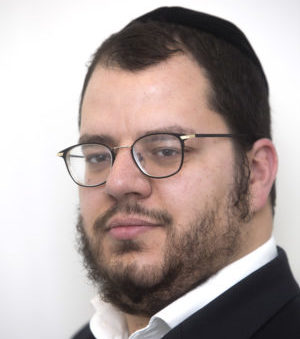Majesty and Mystery in Boyan


For 14 years, a Chassidus numbering hundreds of chassidim waited longingly for a young man whom many adherents of Ruzhin saw as their next leader. Thirty years after finally accepting the crown of leadership, Rebbe Nachum Dov Brayer of Boyan leads with the same mystique that surrounded his forebears.

“Are you Rabbi Brayer?”
“Yes. What would you like?”
“The Rebbe is looking for you. Urgently.”
“I will come speak with him tomorrow.”
“No, he asked that you come today.”
It is Adar 5731/1971, on a side street in Haifa, and two young Gerrer chassidim are pressing Rabbi Menachem Mendel Brayer to meet with their Rebbe, the Beis Yisrael. The timing seems strange. Just days before, Rabbi Brayer’s esteemed father-in-law, Rav Mordechai Shlomo Friedman of Boyan, had left this world. The Boyaner Rebbe’s two sons will carry on his many activities, but neither will assume the position of Rebbe. Rabbi Brayer, the Rebbe’s son-in-law, is a scholar and author whom the Rebbe admired and loved — but he has also refused the rabbinic mantle.
On this gloomy day in Adar, Rabbi Brayer’s wife, family, and Boyaner chassidim around the globe are deep in mourning for the Rebbe who had brought the spirit of Boyan to America and who had led the chassidim of Eretz Yisrael from afar. What urgent matter does the Beis Yisrael want to discuss now, of all times?
Just a few hours later, Rabbi Brayer is in the Gerrer Rebbe’s Yerushalayim home. “I hear that you have a son close to bar mitzvah age,” the Beis Yisrael said. “You must provide him with the proper education, because when the time is right, he will become the Rebbe of Boyan.”
Shabbos Chanukah, 5745/1984
Visit any of the Boyaner kloizen throughout Eretz Yisrael this Shabbos and you’ll find empty buildings. All the chassidim have traveled to Yerushalayim for a Shabbos Chanukah that will remain engraved in their hearts for years to come.
It’s been close to 14 years since the passing of Rav Mordechai Shlomo and that fateful prediction of the Beis Yisrael. Throughout those years, the chassidim have remained leaderless, watching and waiting for the day that the Rebbe’s second grandson, Rav Nachum Dov Brayer, will ascend the throne. He is American-born, they are products of the Holy Land. He is in his mid-20s, they are decades older. He has just begun to build a family, they preside over generations. But it is clear to them all that the Rebbe’s young grandson is a prince.
Now the day has arrived; the prince is becoming king.
Oops! We could not locate your form.













